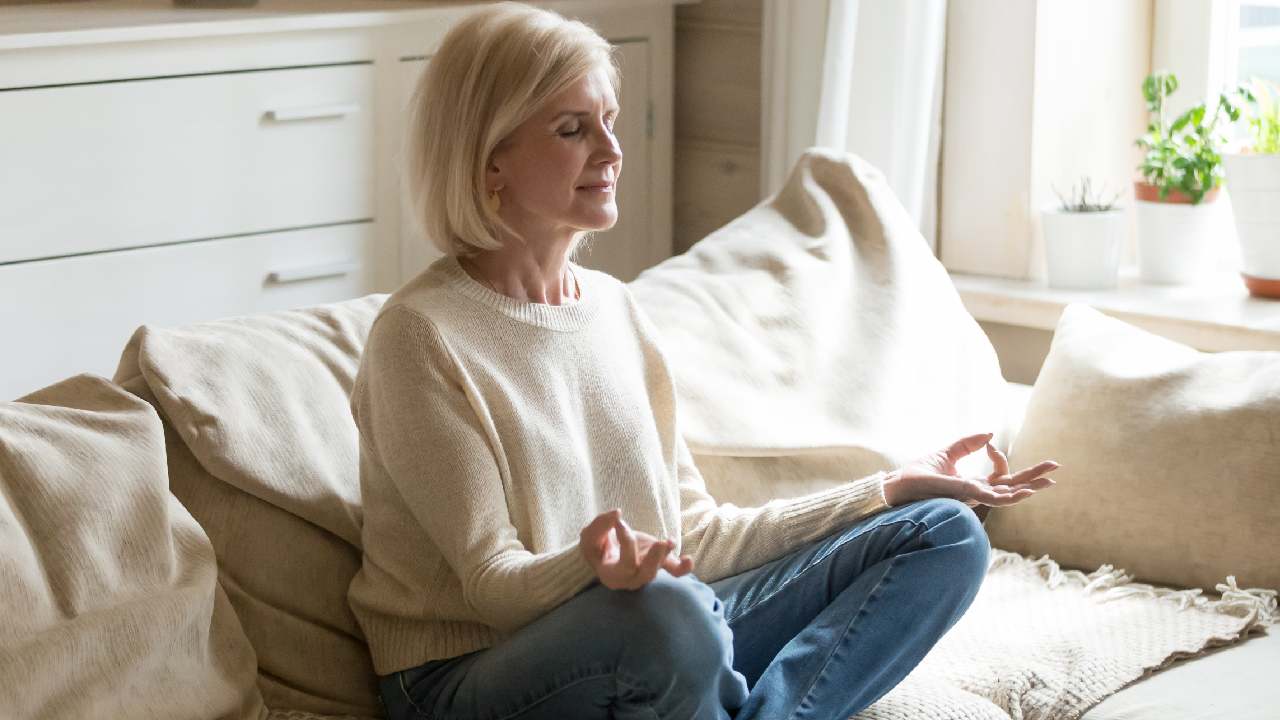Meditation for people who can't sit still

Quilt therapy founder Madeline Fernbach claims that quilting is ‘meditation for people who can’t sit still to meditate’. Discover how doing craft can help you feel feel better today!
So, what exactly is Quilt Therapy?
It was founded by clinical psychologist and self-proclaimed amateur quilter Dr Madeline Fernbach who says Quilt Therapy is an initiative aimed at offering support, inspiration and guidance to those suffering anxiety, depression, trauma or grief.
Though tricky to define, most of us intuitively understand what is meant by the term. As quilting is a creative and often times repetitive art form, Quilt Therapy is about using these skills as a way of working through emotional and mental health issues such as depression and anxiety.
Benefits of doing craft
Many quilters enjoy the therapeutic benefits of quilting without realising it, whether it’s through quilting as part of a group or making gifts for loved ones or charity. “What makes my idea different is that I want to encourage quilters to express their emotions and their issues by creating quilts just for themselves. Just to express what is going on for them,” she explains. “If someone is making a quilt from the heart, most especially when they are making a quilt entirely for themselves, it can speak volumes. With Quilt Therapy I am trying out ways of encouraging people to express their feelings and work through the darkest emotions they might have.”
Craft lowering stress levels
In her own case, Madeline was quilting as a way of de-stressing after an emotionally tiring day or week. In her line of work, she understandably comes across a spectrum of challenging issues and on those occasions when she feels flat or overwhelmed, she retreats to her sewing room just after dinner and only emerges when it’s time for bed. “My partner is very understanding so I try not to do this all the time or I wouldn’t have much of a relationship!” she jokes.
Madeline became interested in quilting while pregnant, when she was struck by what she terms ‘an inexplicable urge’ to create quilts; first for others and then for herself. “At some point I made the connection between doing therapy and making quilts and realised after an internet search that there really wasn't anything available, either in book or electronic form, that made use of quilts for mental health healing.”
Encouraged, Madeline launched the Quilt Therapy Facebook page as a means of spreading her idea in a way that would reach quilters in both city and rural areas. It was important for Madeline to ensure access to country quilters, as these are the very people least likely to access mental health services.
She recognised that, while you can talk a problem through until you’re blue in the face, non-verbal means of expression can be intensely powerful, allowing individuals to represent their ideas visually, often revealing new ways of understanding and dealing with a problem.
“Country women have a culture of ‘sucking it up’ and getting on with life and not valuing their own mental health,” Madeline elaborates. “Through expressing things they find difficult to say in words, quilting can be a therapeutic process,” she says, claiming it is equally effective as a ‘timeout’ or escape from distressing situations, helping to sooth and relax.
Quilt Therapy can help
Combining a mix of gentle cognitive behavioural therapy interventions with new ideals Madeline is trialling, she discovered that the initiatives most enthusiastically received were those relating to community-based projects, which prompted the launch of the Quilt Therapy community projects.
“I believe that as people engage with communities and other individuals, they can find a way to deal with their difficulties, moving towards a sense of peace and, hopefully, optimism about the future,” Madeline adds.
Of course, the final results don’t need to be perfect. It is all about communication and connections with others. The ultimate objective is not to create a flawless piece of art, but to create a strong and healthy community.
Overwhelmed by the initial response on Facebook, with over a thousand ‘likes’ attained in a matter of weeks, word quickly spread. “What has been even more rewarding was that people are willing not only to ‘like’ the page, but also participate. I am hearing stories of people’s losses, their successes, their struggles with mental health issues, and quilting is always a central part of the way through,” she says.
Jacqueline Atkinson, Professor of Mental Health Policy at the University of Glasgow, investigated during the study The Relationship Between Quilting and Wellbeing for the Journal of Public Health. This study found that a strong social network fostered the formation of strong friendships.
Affirmation from others boosted self-esteem and increased motivation for skill development and using colour was psychologically uplifting. Quilting was challenging, demanded concentration and participants maintained and helped participants learn new skills.
Get involved today!
Anybody is welcome to get involved, regardless of their sewing level and even Madeline admits she isn’t a great quilter, but her love of the craft renders this irrelevant. “The act of making a quilt, from the planning to the preparation, selection of materials, cutting and sewing, and finally quilting is creative but also repetitive.
When an individual’s mind takes off in uncontrollable flights of anxiety, depression or grief, making a quilt soothes the mind and redirects it in a safe, predictable way,” Madeline is careful to state, however, that where possible it is recommended to deal with issues relating to trauma, depression and anxiety with professional help. She adds, “I invite you to come on this creative path, helping to connect people through non-verbal communication.”
Republished with permission of Wyza.com.au.
